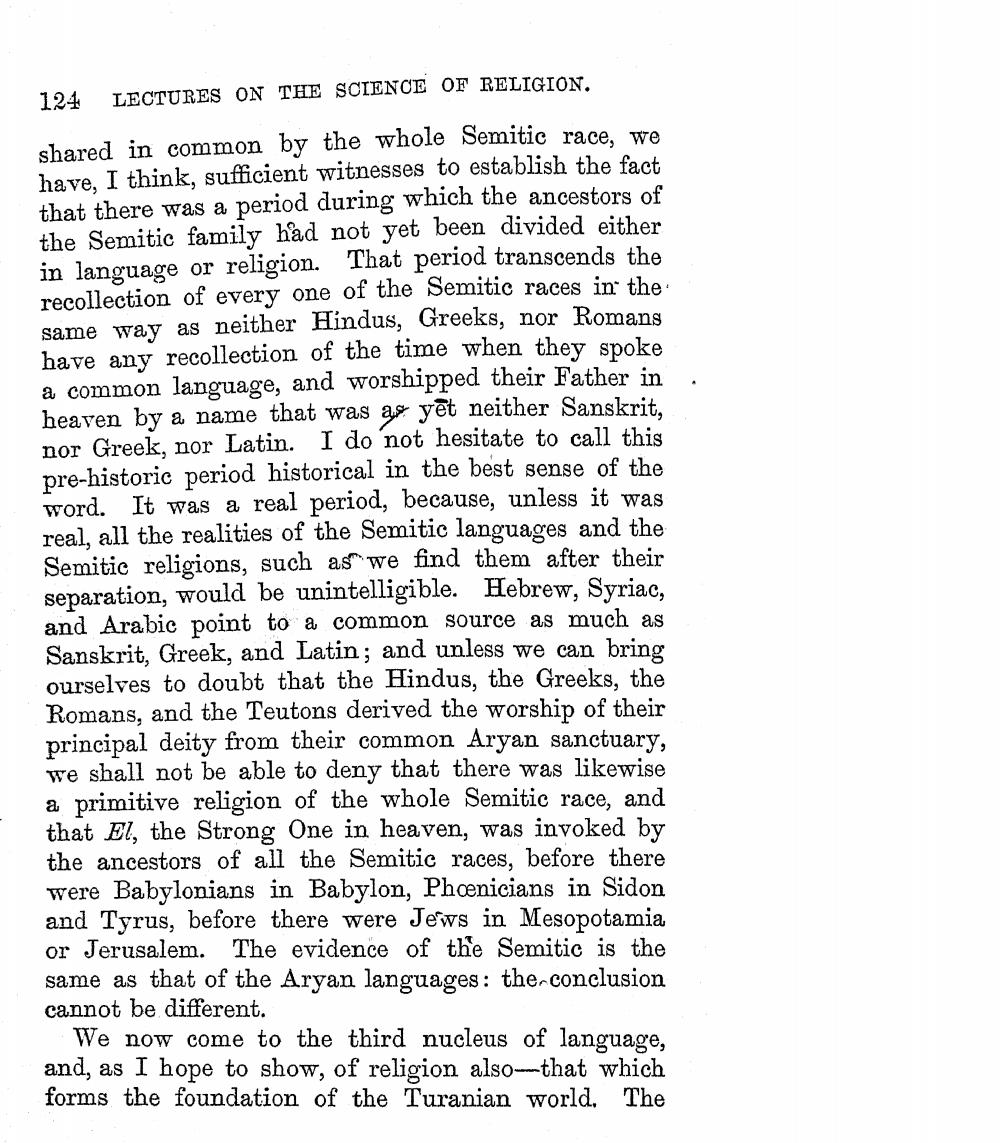________________
.
124 LECTURES ON THE SCIENCE OF RELIGION. shared in common by the whole Semitic race, we have. I think, sufficient witnesses to establish the fact that there was a period during which the ancestors of the Semitic family had not yet been divided either in language or religion. That period transcends the recollection of every one of the Semitic races in the same way as neither Hindus, Greeks, nor Romans have any recollection of the time when they spoke a common language, and worshipped their Father in heaven by a name that was as yet neither Sanskrit, nor Greek, nor Latin. I do not hesitate to call this pre-historic period historical in the best sense of the word. It was a real period, because, unless it was real, all the realities of the Semitic languages and the Semitic religions, such as we find them after their separation, would be unintelligible. Hebrew, Syriac, and Arabic point to a common source as much as Sanskrit, Greek, and Latin; and unless we can bring ourselves to doubt that the Hindus, the Greeks, the Romans, and the Teutons derived the worship of their principal deity from their common Aryan sanctuary, we shall not be able to deny that there was likewise a primitive religion of the whole Semitic race, and that El, the Strong One in heaven, was invoked by the ancestors of all the Semitic races, before there were Babylonians in Babylon, Phoenicians in Sidon and Tyrus, before there were Jews in Mesopotamia or Jerusalem. The evidence of the Semitic is the same as that of the Aryan languages: the conclusion cannot be different.
We now come to the third nucleus of language, and, as I hope to show, of religion also--that which forms the foundation of the Turanian world. The




